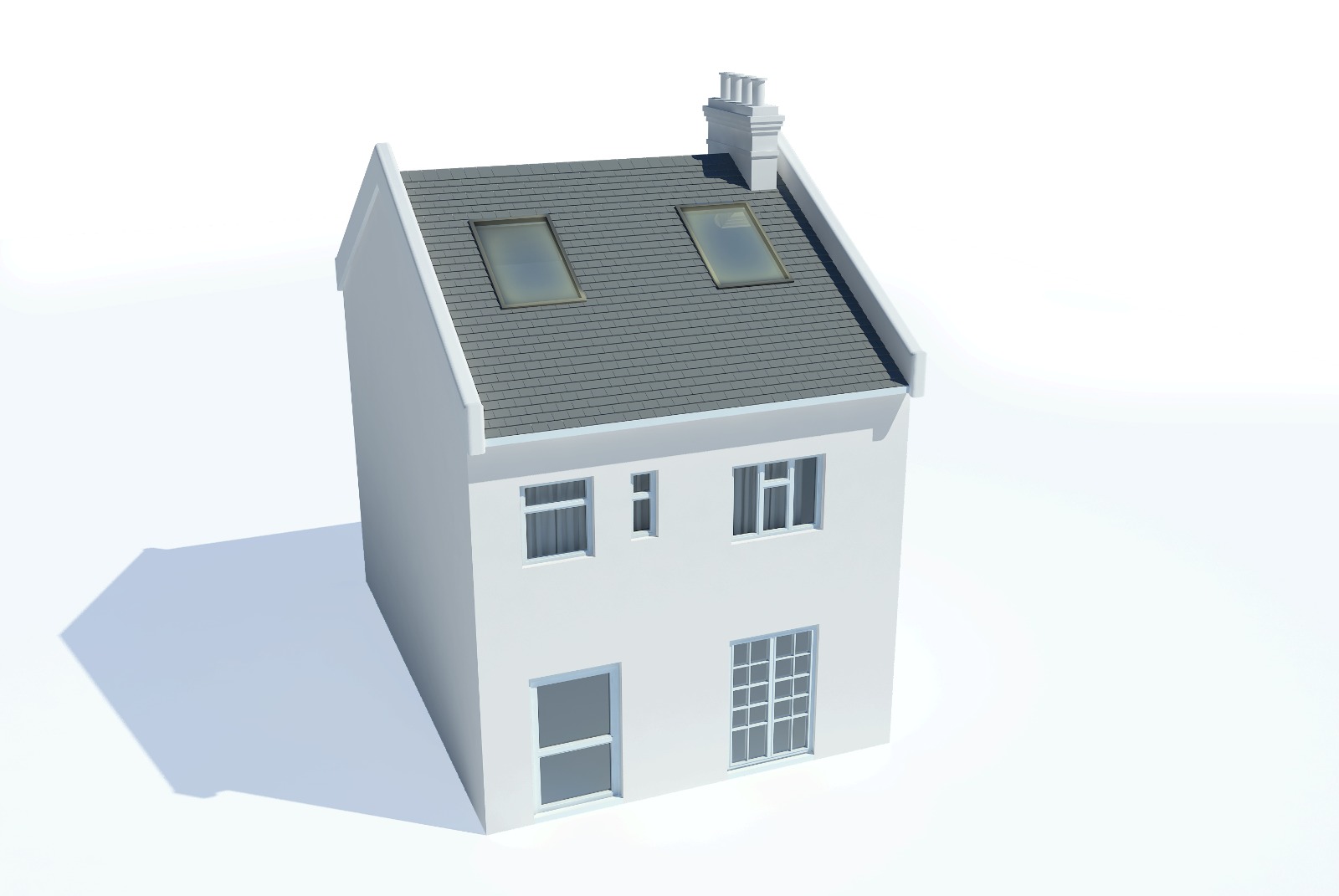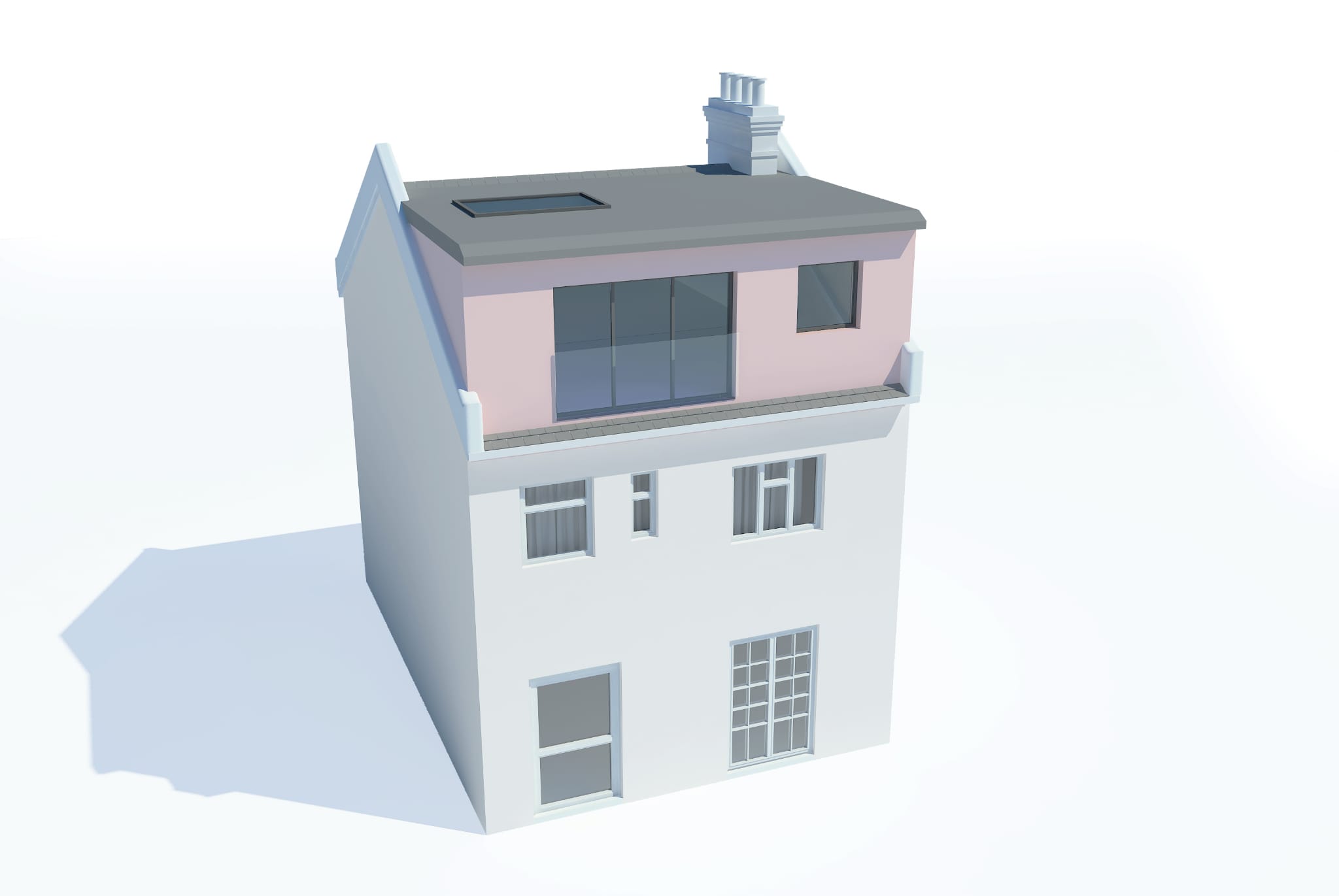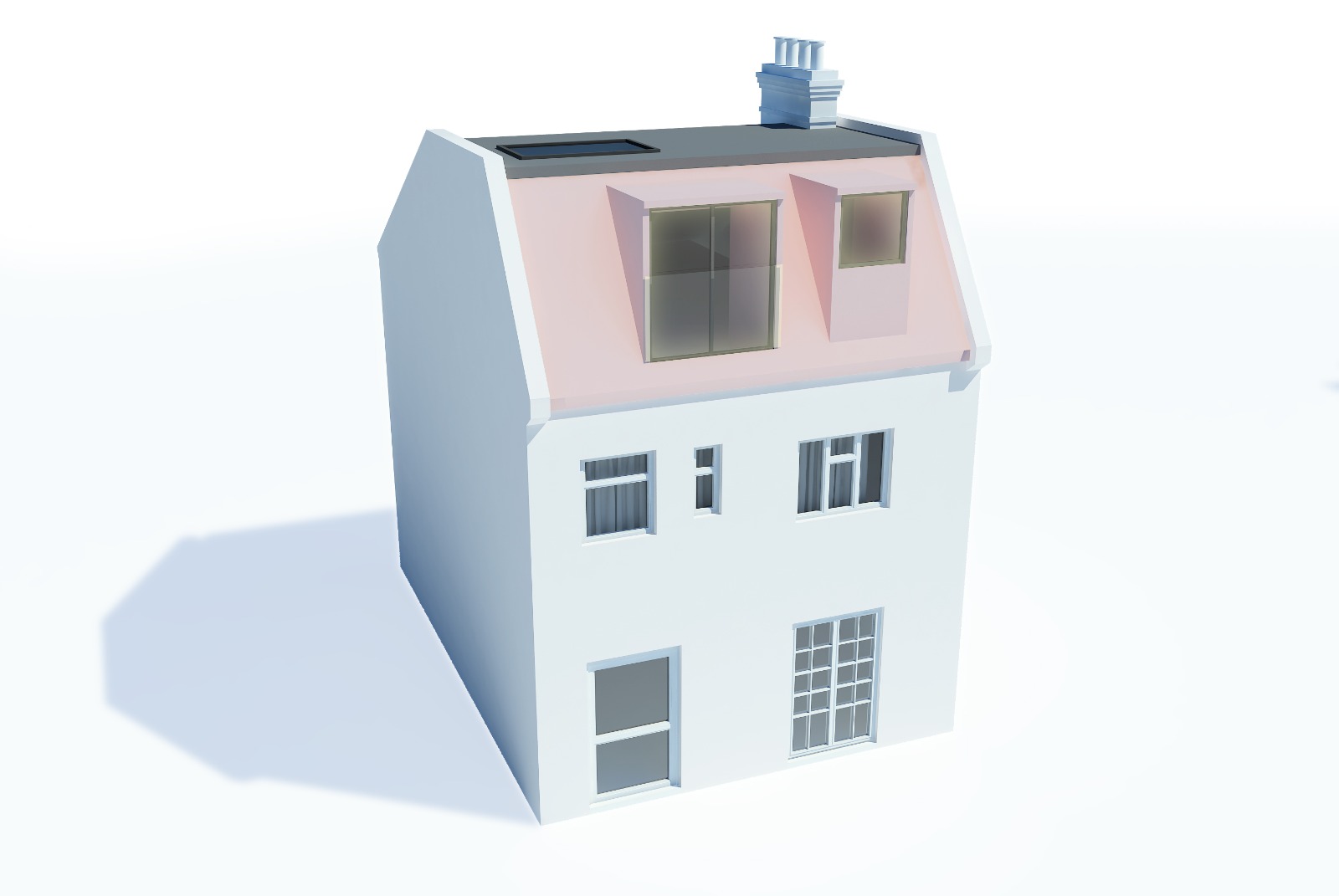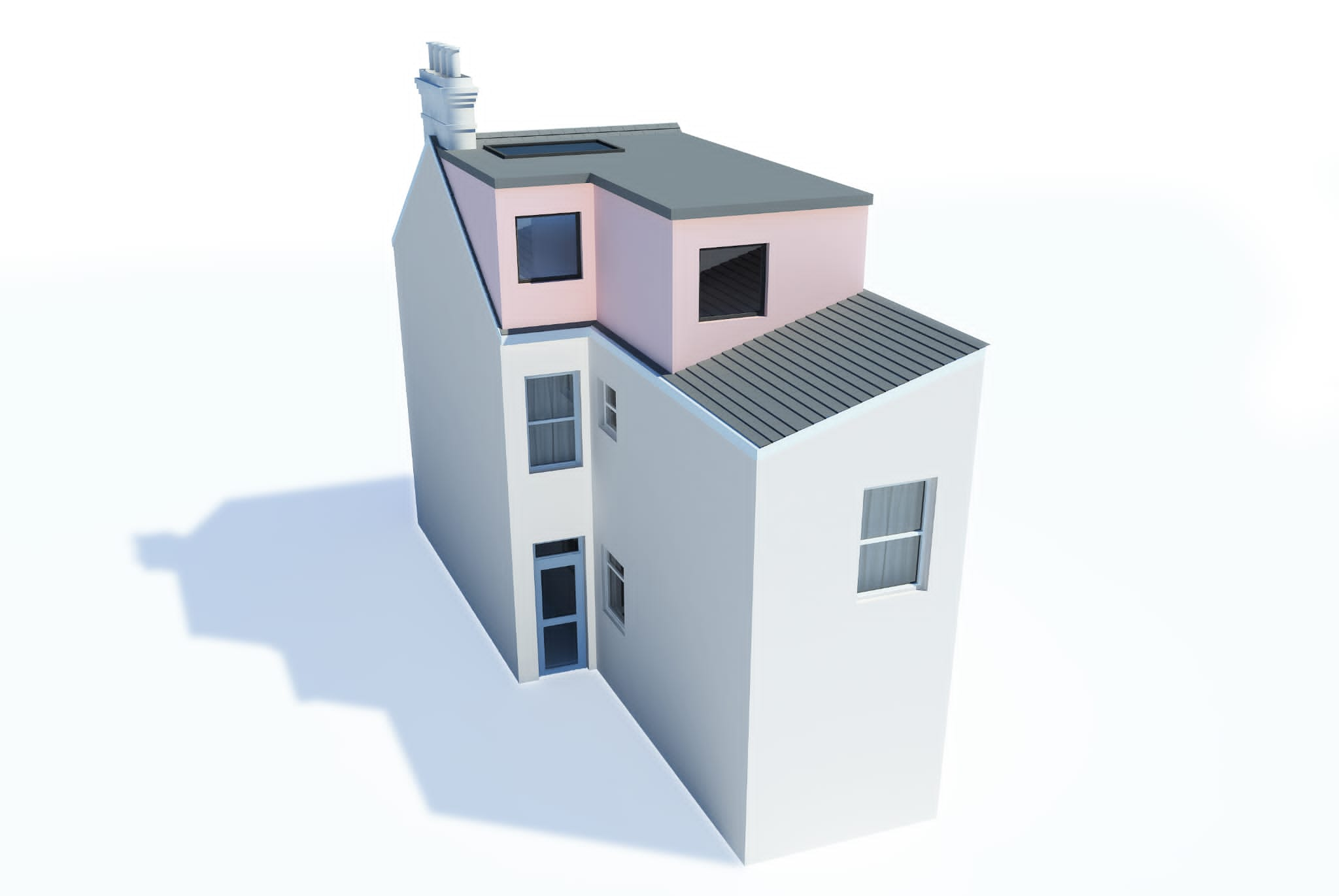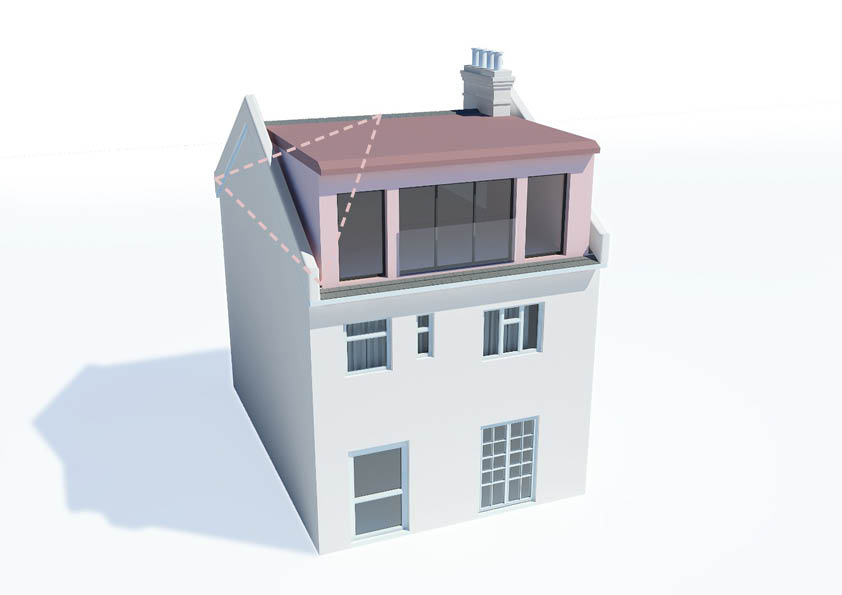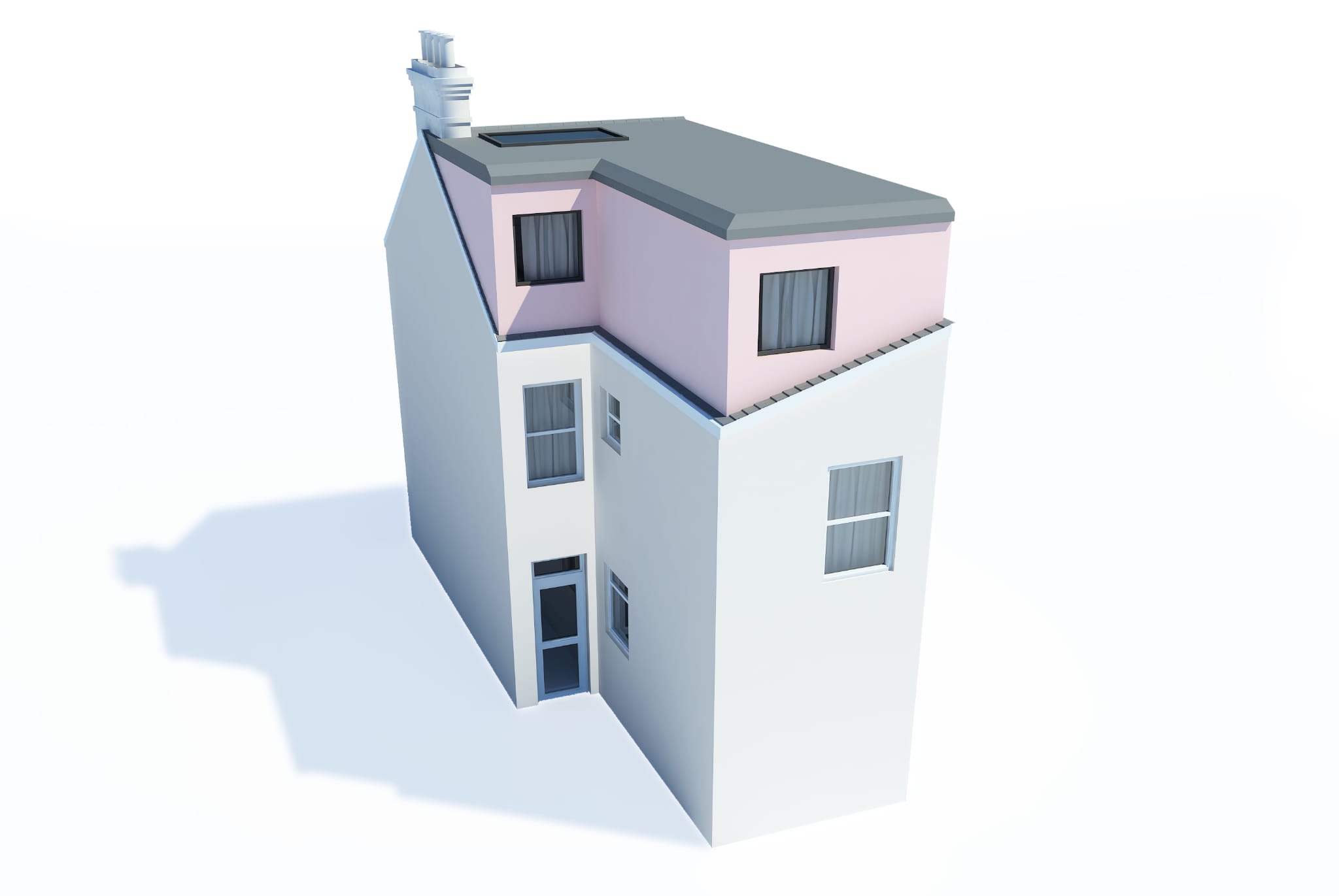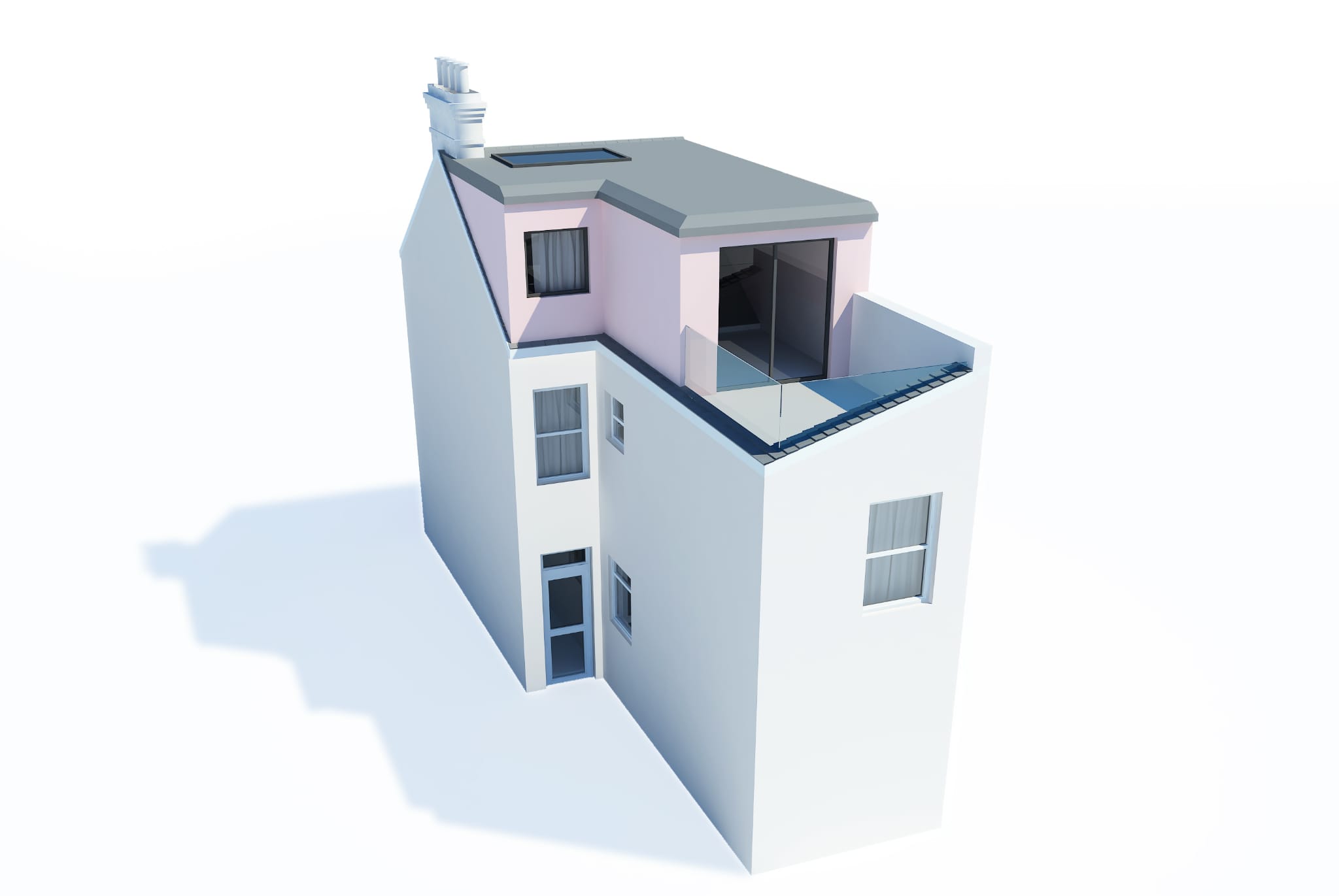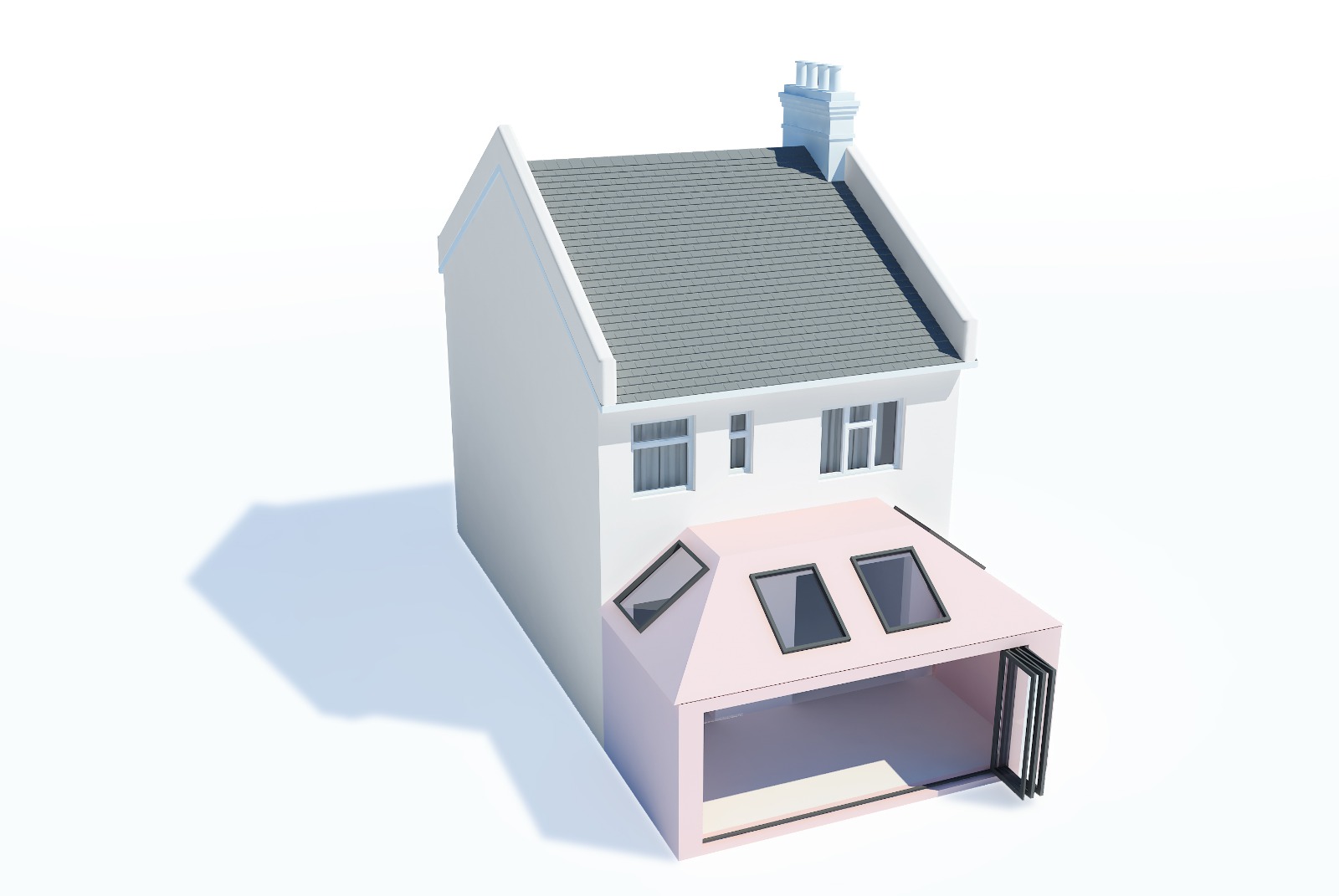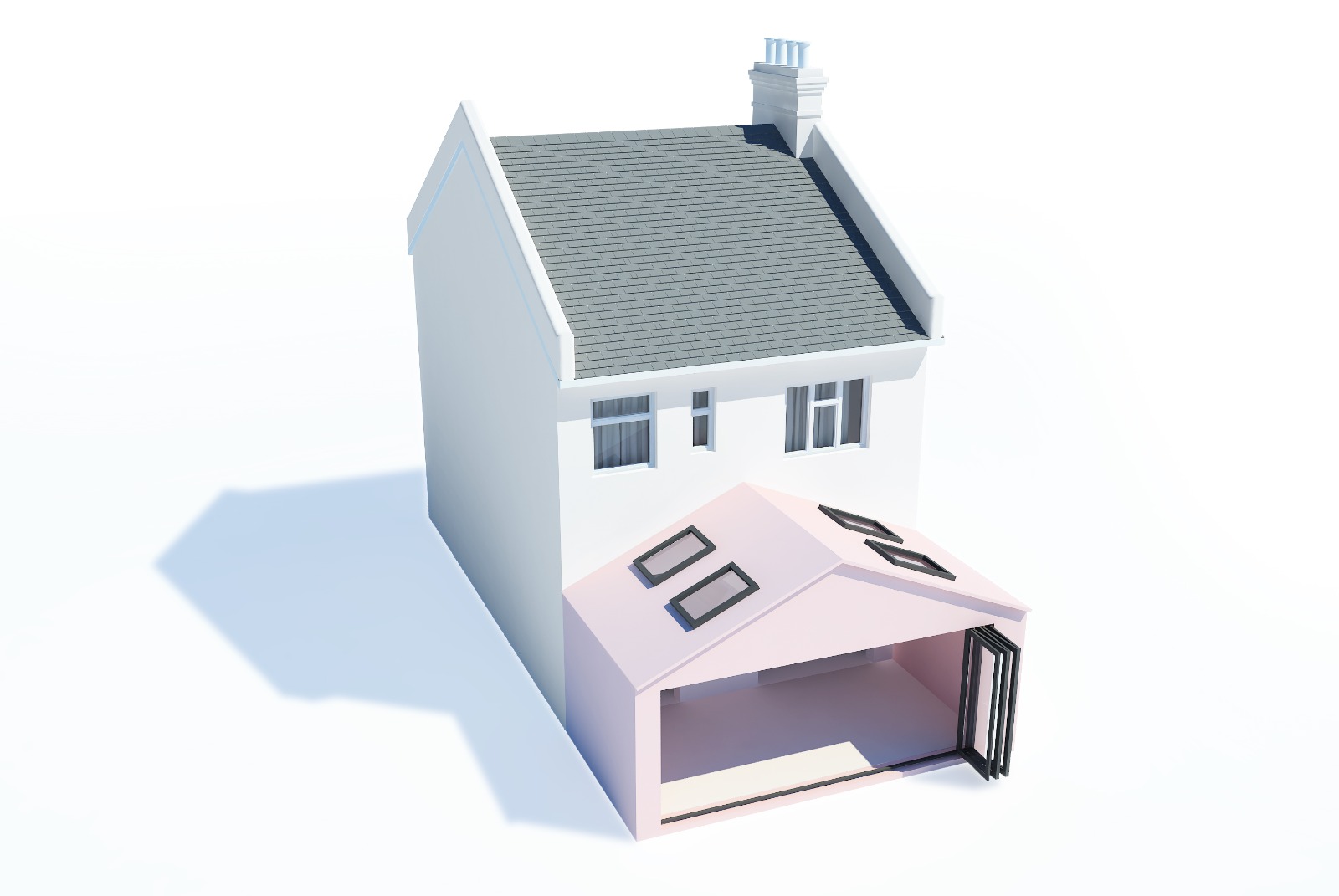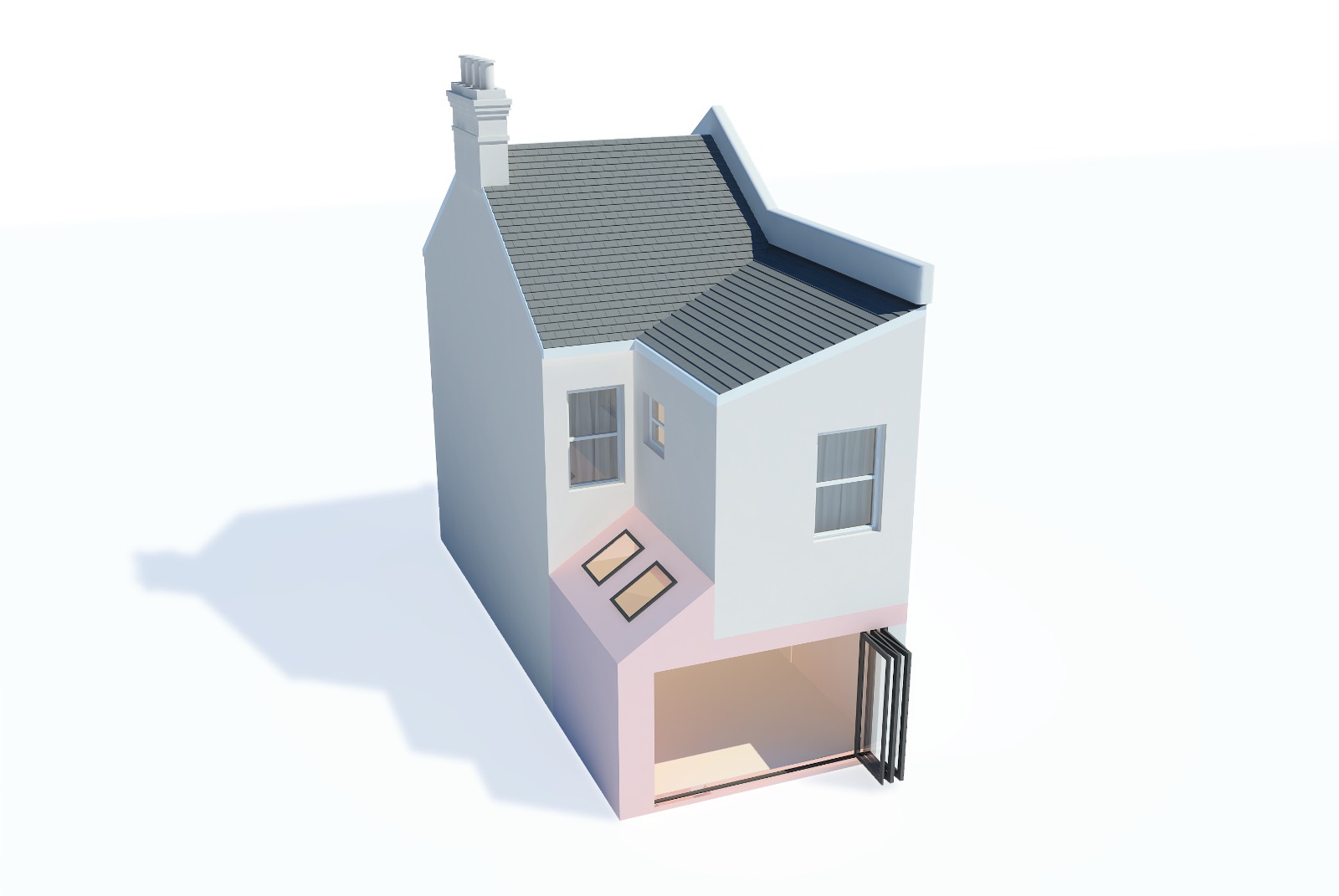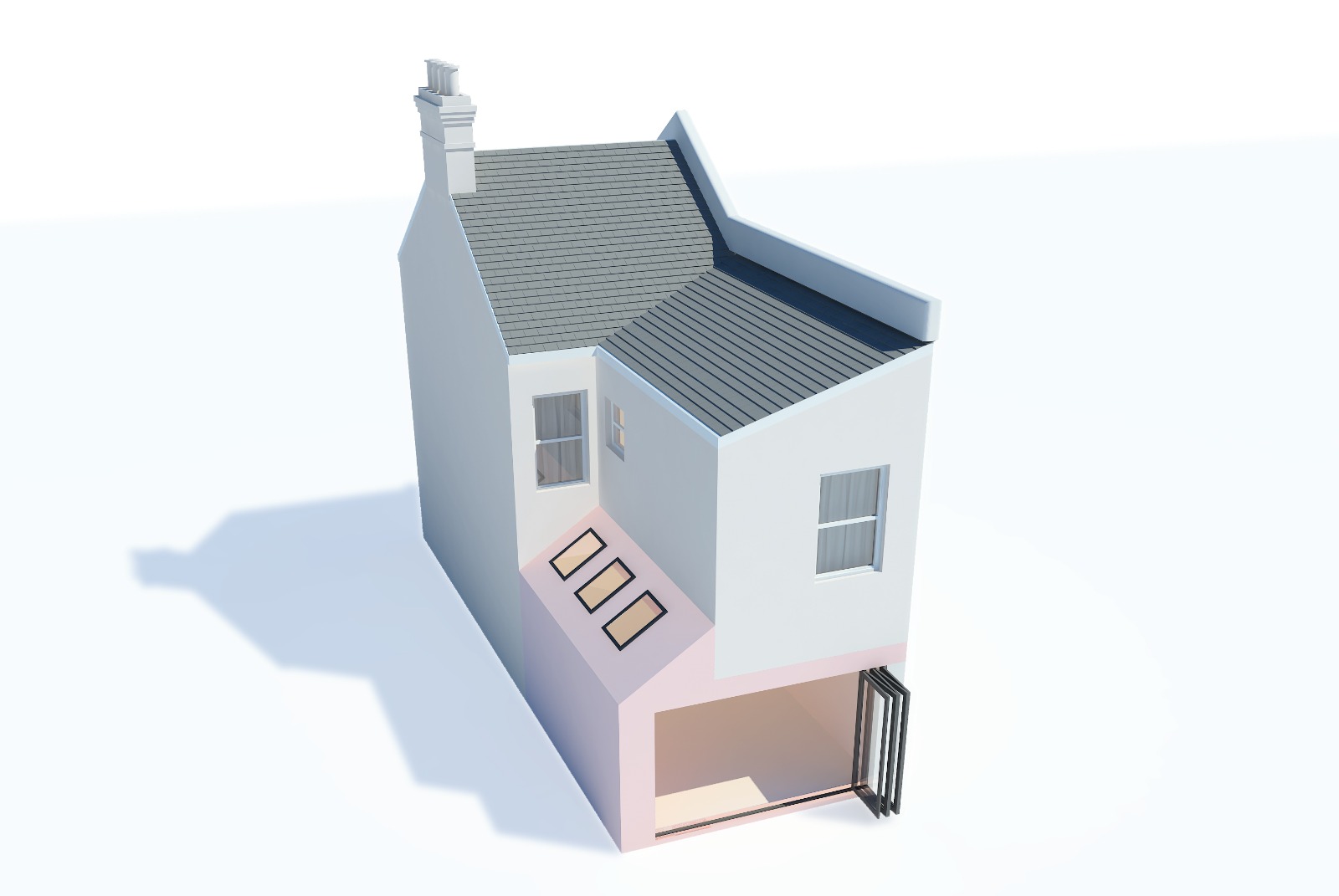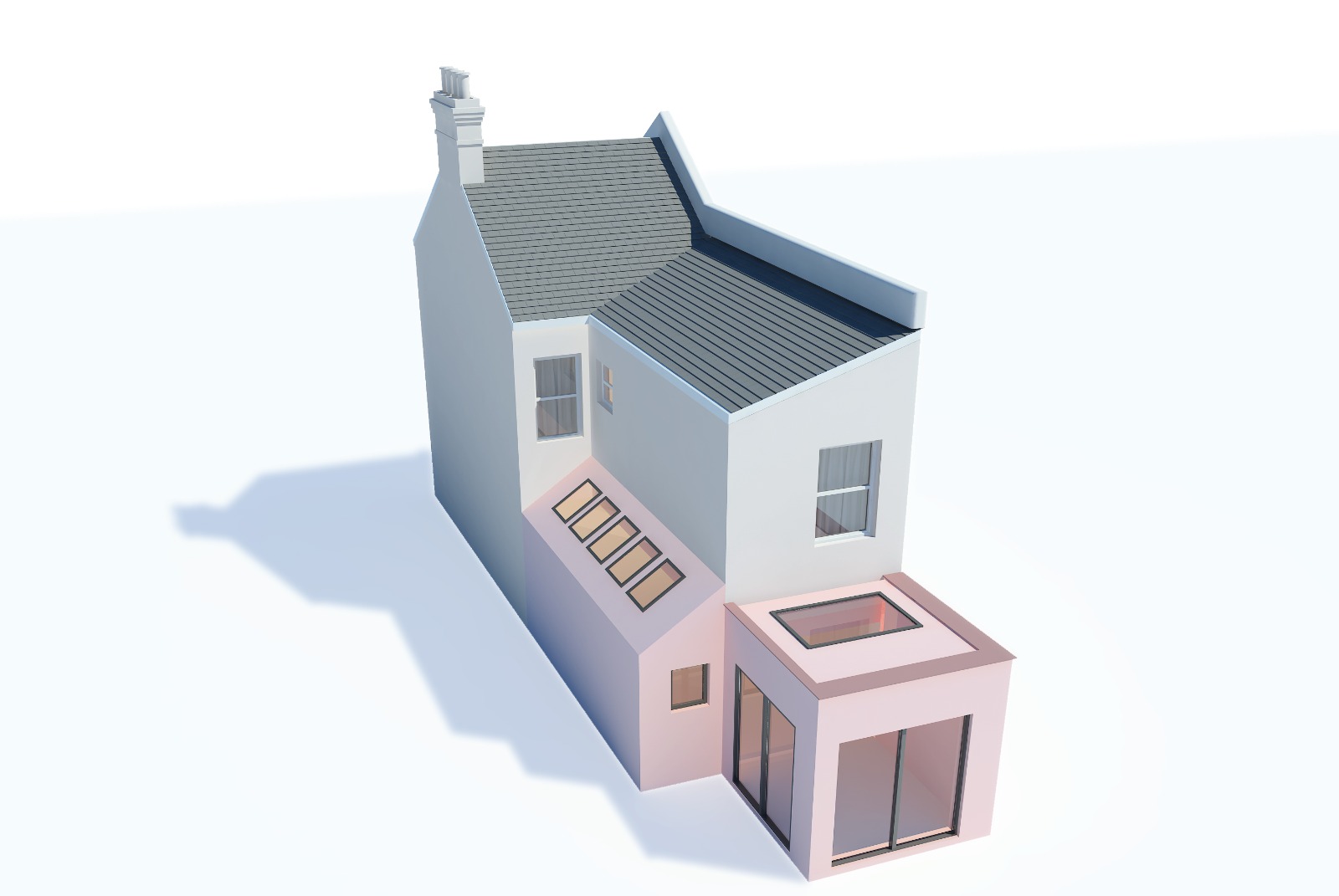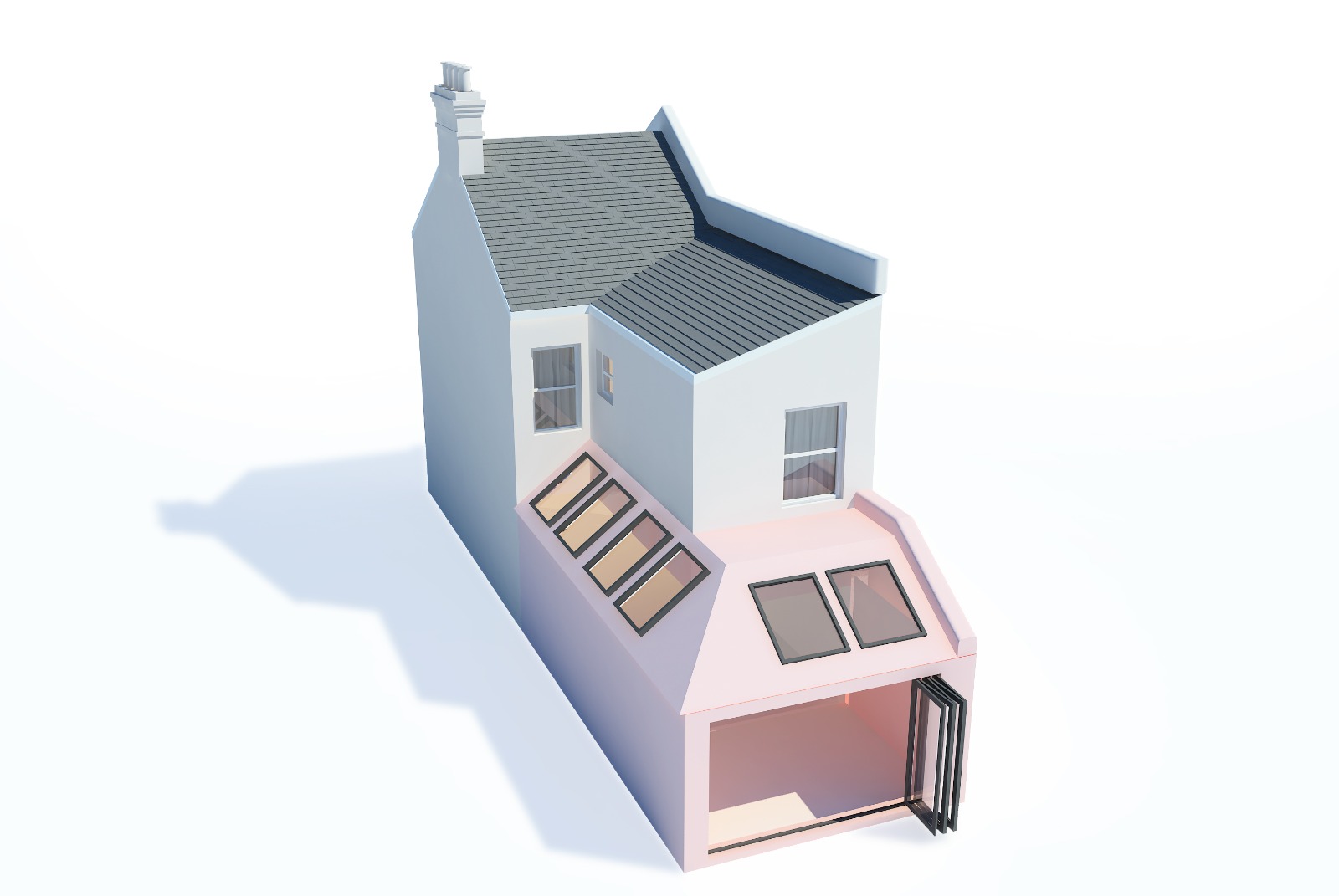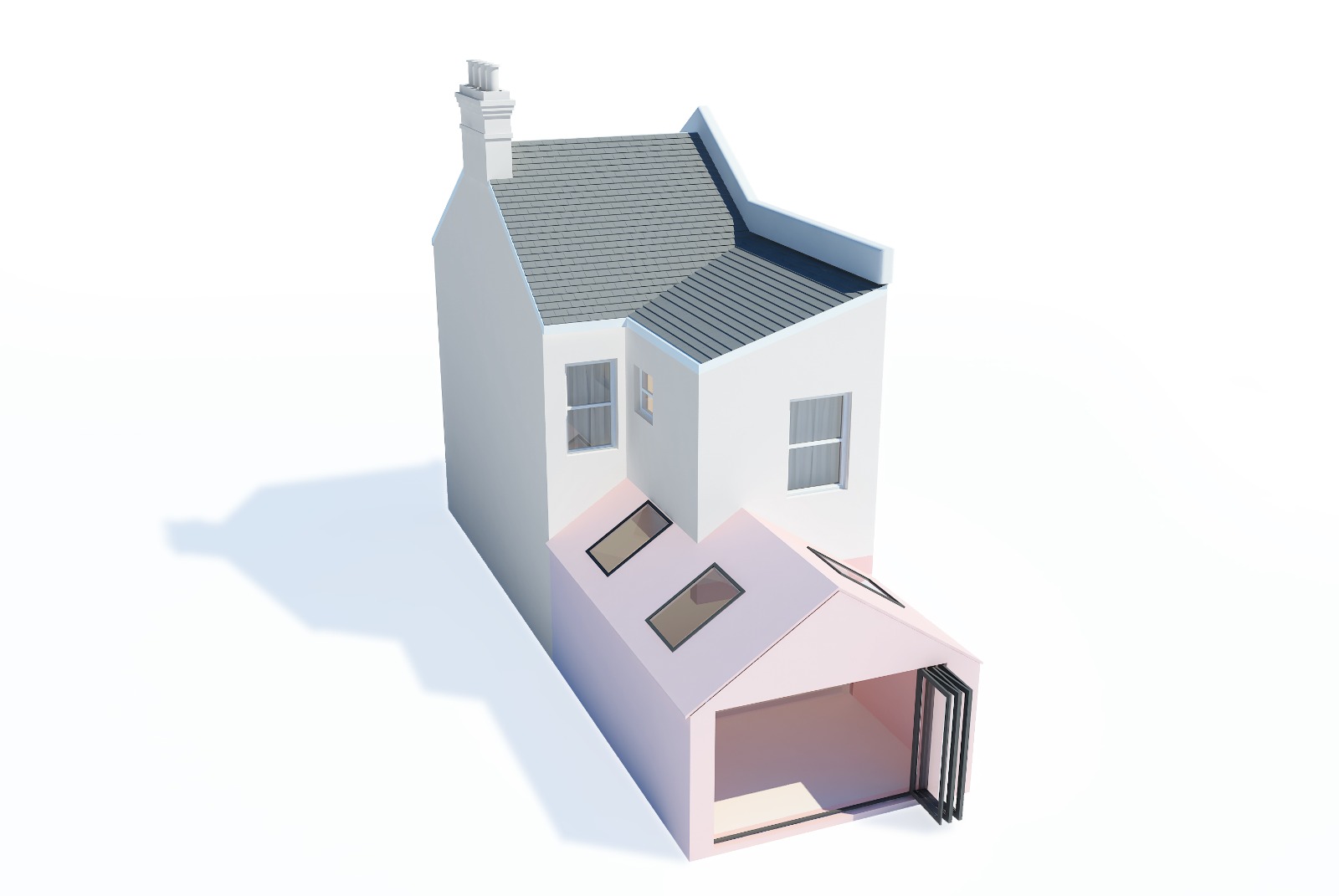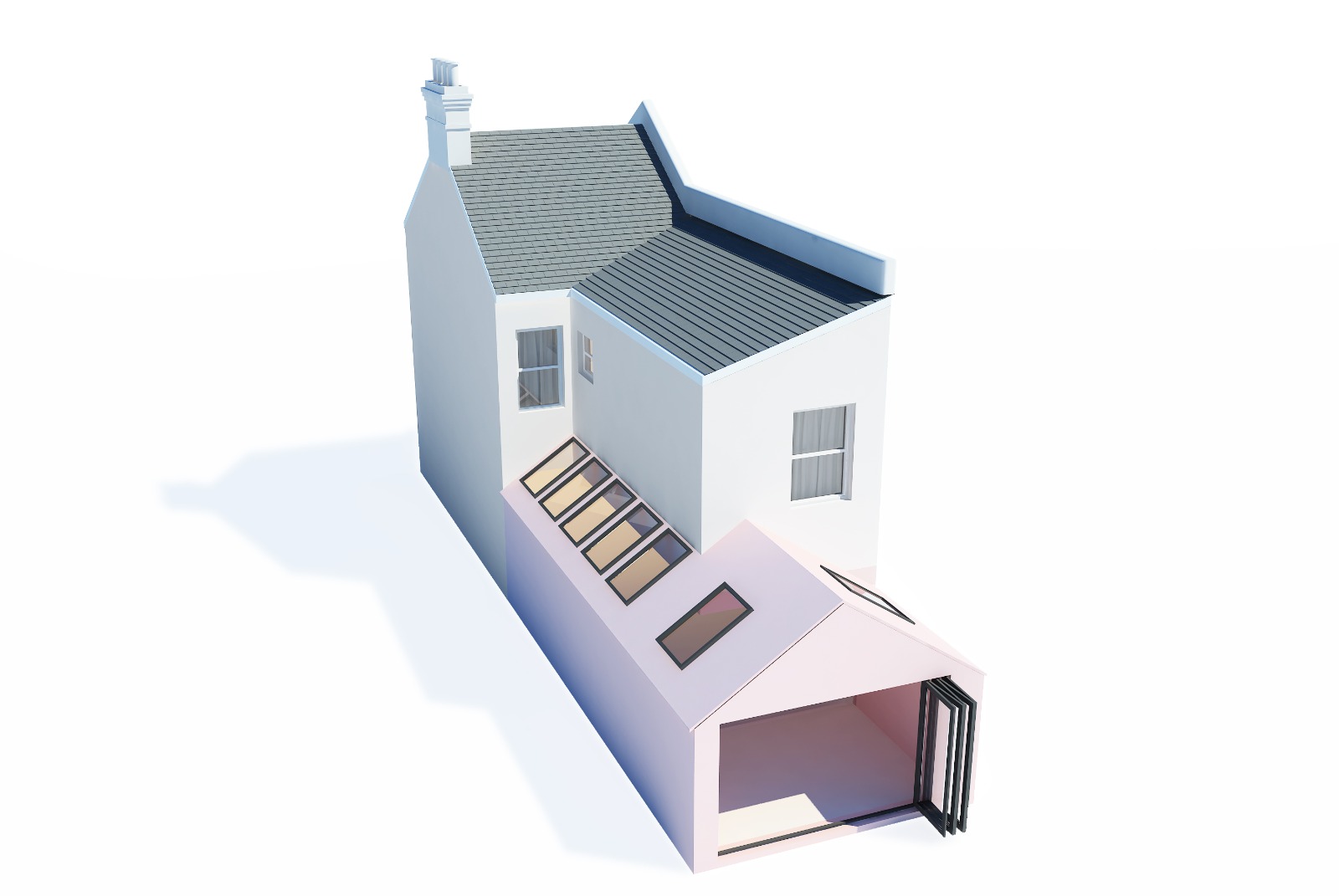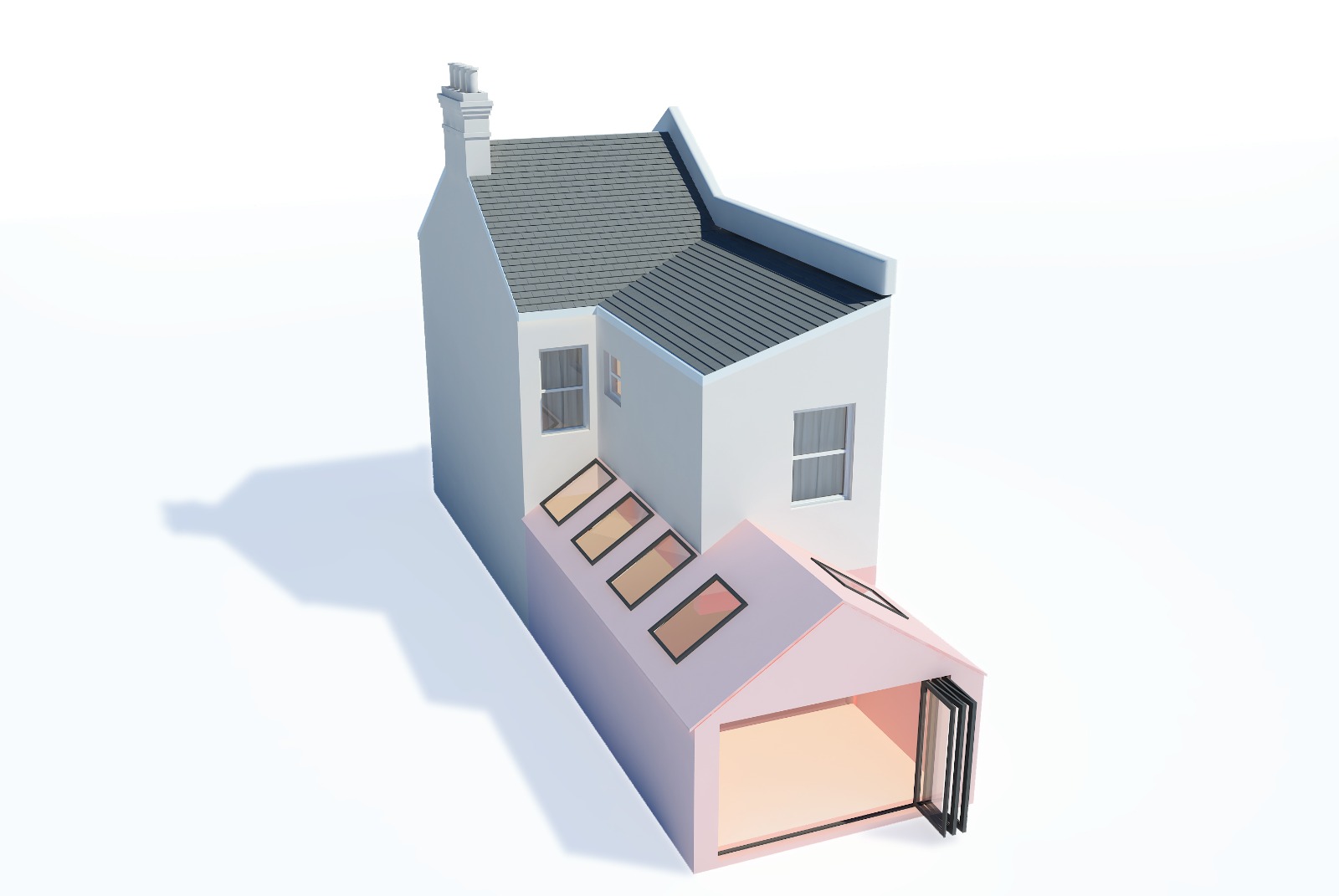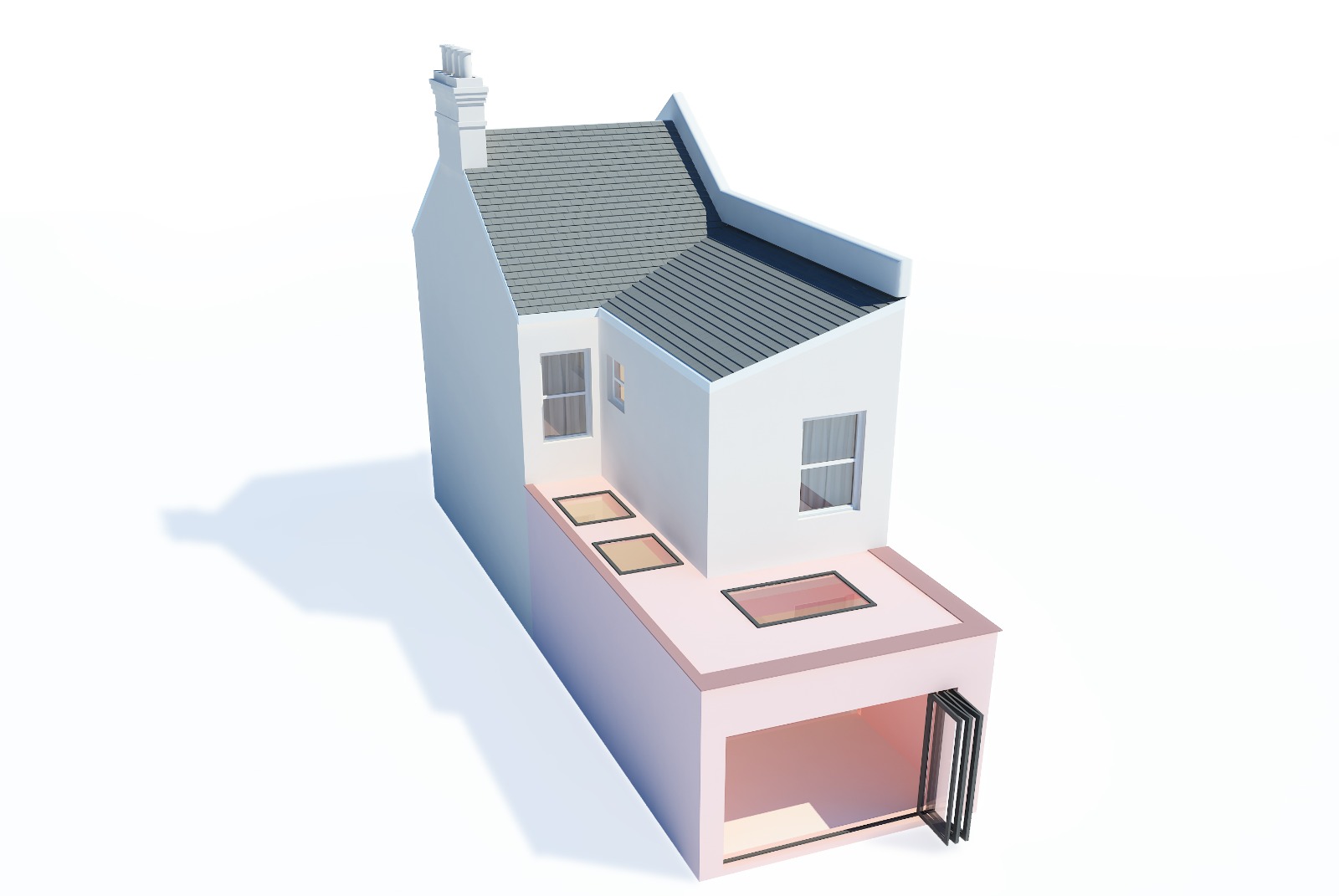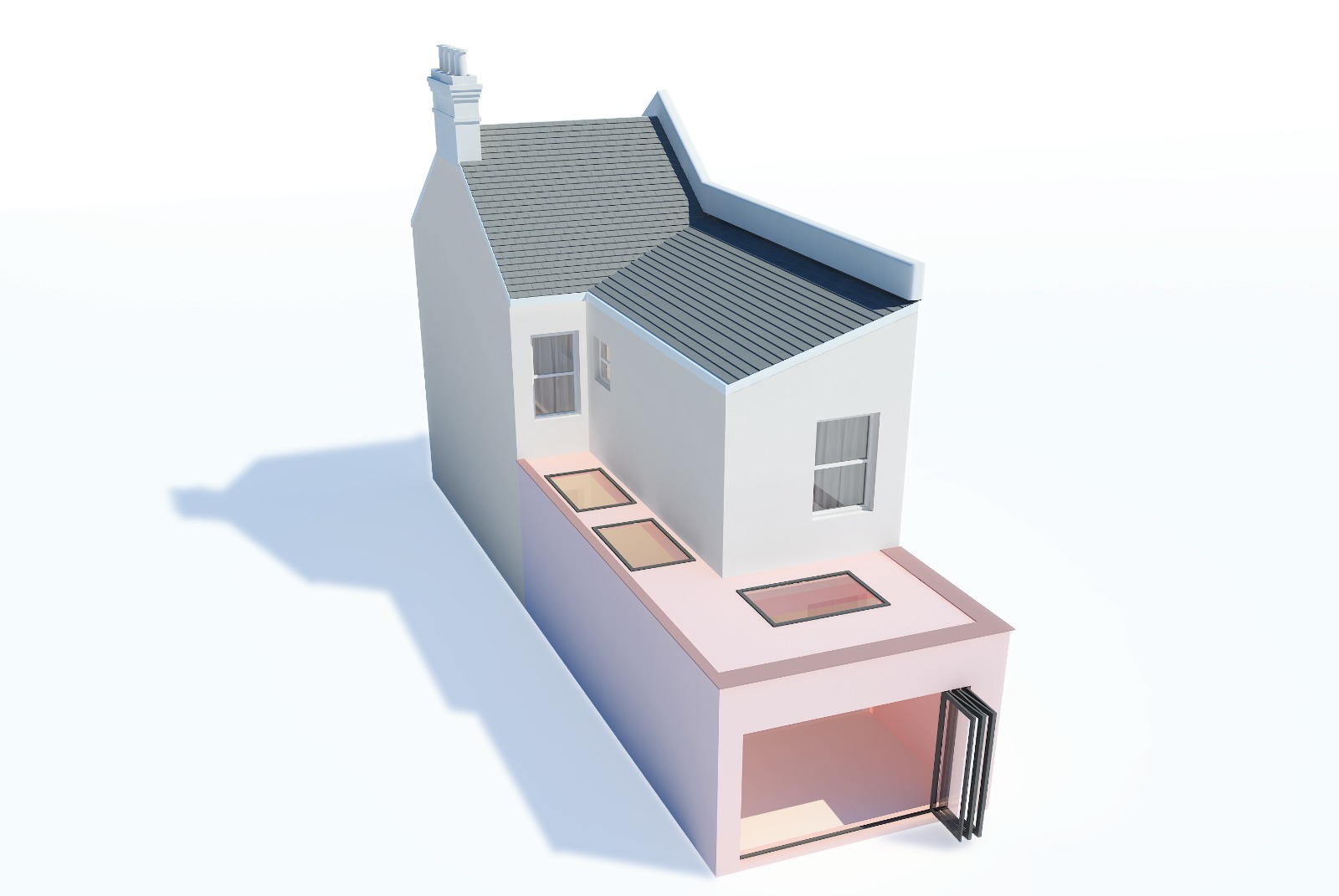Semi-detached houses are the most popular type of home in the UK and are a sought-after first home for many young families.
However, with growing households, these can quickly become cramped, with homeowners struggling to create more room to accommodate their lifestyles. One simple fix to this space dilemma is to transform the often-ill-utilised loft space via loft conversions.
Loft conversions in semi-detached homes offer property owners the perfect opportunity to create beautiful brighter and larger living spaces that add value and are a great alternative to regular extensions.
There are several different options for loft conversions available and choosing the right one for you is essential in constructing the perfect loft conversion.
There are 4 main types of loft conversions commonly designed in semi-detached houses. These are:
Roof Light Conversions – Often referred to as Velux conversions, roof light conversions are the simplest, and therefore the cheapest, type of loft conversion design. Due to this, they generally do not require planning permission.
Roof light conversions involve transforming the roof space into an additional room by installing skylight windows to the pitch of the existing roof, along with floor reinforcements, insulation, a staircase and connection to basic utilities.
Dormer Loft Conversions – Dormer loft conversions involve a vertical extension on the roof of the house to create more floor space as well as head room. These are popular extension options on semi-detached houses which have a sloping roof.
Dormer extensions are of two varieties based on the type of roof extension, namely flat roof and pitched roof dormers. Flat roof dormers add more living space whereas pitched roof dormers are viewed as the more attractive option.
Hip-to-Gable Loft Conversions – A more complex extension, hip-to-gable conversions involve transforming the slope of a hip roof into a gable-style roof with a vertical wall.
This transformation adds considerable floor space and head room allowing the creation of an additional room within.
Mansard Conversions – The most complex type of loft conversion, mansard conversions add incredible living space within semi-detached, detached, and terraced homes.
Mansard conversions are typically constructed at the rear part of the house and involve altering the structure of the existing roof to create a flat roof with a sloping wall.
Loft conversions offer a myriad of options and interesting possibilities in how they are utilised. Their use often depends on the amount of space created within and its integration with the rest of the structure. Some innovative ideas for the newly converted loft include:
- An extra bedroom (with an en-suite bathroom)
- Home office
- Playroom
- Home library/ Reading nook
- Walk-in wardrobe
All these options need to take into account certain practicalities of the design such as the head room available.
The loft area can also be designed to maximise its potential by:
- Optimising the natural light that enters through well-placed windows
- Converting awkward corners into useful storage spaces with the addition of shelves
- Arranging furniture to match the head room requirement for each area
- Adding feature walls to highlight design features and add more depth
One great benefit of loft conversions is that they can usually be constructed without the need of planning permission. However, this depends on the complexity of the conversion.
For a loft conversion to fall under permitted developments, it must meet with specific limitations regarding its size, design and structural alterations, the type of property on which the conversion is constructed, and where the property is listed.
For example, a loft conversion which features a balcony or a conversion which is done on a property that is listed in a conservation area, will require planning permission.
Even those conversions that do not require planning permission will, however, require building regulations approval. This ensures that the build complies with standard building guidelines.
Loft conversions are generally considered to be a cost-effective alternative to regular extensions. On average, they can range from a conservative £15,000 to a more extravagant £50,000. However, the cost is dependent on a number of factors such as:
- The complexity of the conversion
- The size of the conversion
- Building materials
- Location
- The need for planning permission
- Specialists’ fees
- Fittings and fixtures
It is important to realise that the cost of a loft conversion may be made up by the value it adds to a property. Loft conversions usually increase the value of a property by 10-20%, so if the cost of the conversion is less than that amount, it is seen as a worthwhile investment.
Loft conversions on semi-detached homes can add incredible space and value to your home provided it is done right. To ensure that the final build boasts of elegant design and a seamless finish, it is important to entrust this project to experienced and reputable builders.
This is where Good Design and Build comes in.
Being the primary extension specialists, the team at Good Design and Build have decades of experience in constructing exceptional extensions and conversions. Our team comprises of architects, surveyors, builders, technicians, and project managers. This allows us to offer complete project management services from start to finish.
Our services include:
- Surveying the location
- Free consultations and cost quotations
- Comprehensive designing and planning of the proposed extension
- Applying for and securing the requisite planning permission and building regulations approval
- Contractual work
- Daily on-site management of the build
This means that every aspect of the loft conversion is carefully overseen by us allowing you to get the loft conversion of your dreams without the stress of the build.
Good Design and Build creates bespoke beautiful lofts that add space and value to your home.
How we deliver projects
Our process is simple and divided into two distinct phases with separate contracts: Design and Build. As a client you only commit to one phase at a time depending on what stage of the process you are in. Each phase consists of three stages as described below.
1. Design
This is the kick-off point for your project. We carry out a complete architectural measured survey of the property. This allows us to create accurate CAD design drawings. This is followed by a design meeting to start discussing your ideas in more detail.
2. Planning
At this stage we finalise the designs with you and start preparing planning applications as needed. We place a high priority on ensuring that plans, designs and schedules are all based on a thorough and detailed understanding of planning guidelines. We co-ordinate with local authorities until the decision is made, and the planning approval is secured.
3. Technical
Once the planning consent is secured, we translate the design drawings into more detailed technical drawings for the purposes of building control and construction. This also includes specifications and structural calculations. At this stage, we will also submit to you our ‘no obligation’ quote for the build phase.
4. Pre-build
90% of our clients decide to stick with us after the design phase is completed. Once the build contract is signed, we kick off the process by making sure all the pre-build processes are complete. These include assistance with party wall agreements, Thames Water build over agreement, submitting building control application, and preparing method statements etc as needed. This stage ends with a pre-start meeting with your foreman before the actual build begins.
5. Build
One of our foremen will be dedicated to your project and will be on-site to manage everyday works. Our project managers will be overseeing the works to make sure they are completed to high standards, within your budget and on time. Throughout the process we will keep you updated with the progress and coordinate the works with third parties such as kitchen or flooring suppliers. We will also advise and guide you to choose any suppliers if needed.
6. Handover
As the build draws to finish, we will help to iron out any ‘snags’ to make sure everything is completed to your satisfaction. We will put together all necessary certificates such as gas, electricity and building control completion along with warranties for glazing, boiler etc. At the final completion meeting, we will hand you these documents, together with the keys to your house. Needless to say, you can contact us any time after this, if you want us to look at something.
This is the kick-off point for your project. We carry out a complete architectural measured survey of the property. This allows us to create accurate CAD design drawings. This is followed by a design meeting to start discussing your ideas in more detail.
At this stage we finalise the designs with you and start preparing planning applications as needed. We place a high priority on ensuring that plans, designs and schedules are all based on a thorough and detailed understanding of planning guidelines. We co-ordinate with local authorities until the decision is made, and the planning approval is secured.
Once the planning consent is secured, we translate the design drawings into more detailed technical drawings for the purposes of building control and construction. This also includes specifications and structural calculations. At this stage, we will also submit to you our ‘no obligation’ quote for the build phase.
90% of our clients decide to stick with us after the design phase is completed. Once the build contract is signed, we kick off the process by making sure all the pre-build processes are complete. These include assistance with party wall agreements, Thames Water build over agreement, submitting building control application, and preparing method statements etc as needed. This stage ends with a pre-start meeting with your foreman before the actual build begins.
One of our foremen will be dedicated to your project and will be on-site to manage everyday works. Our project managers will be overseeing the works to make sure they are completed to high standards, within your budget and on time. Throughout the process we will keep you updated with the progress and coordinate the works with third parties such as kitchen or flooring suppliers. We will also advise and guide you to choose any suppliers if needed.
As the build draws to finish, we will help to iron out any ‘snags’ to make sure everything is completed to your satisfaction. We will put together all necessary certificates such as gas, electricity and building control completion along with warranties for glazing, boiler etc. At the final completion meeting, we will hand you these documents, together with the keys to your house. Needless to say, you can contact us any time after this, if you want us to look at something.
Featured Projects
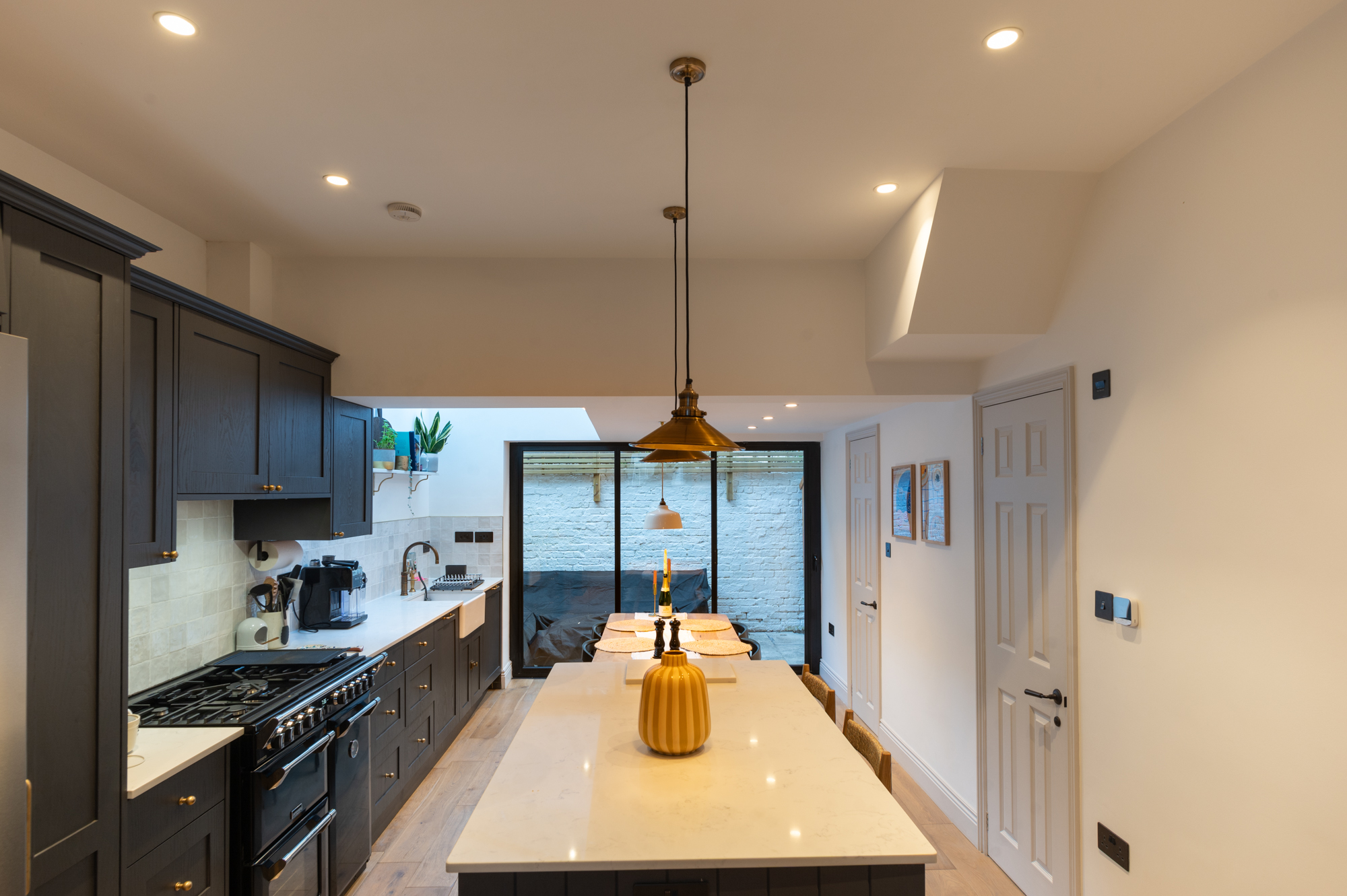
Fulham
Orbain Road SW6 7JZ
This project was completed in 2023 and the approximate budget was £101,000.
Learn more
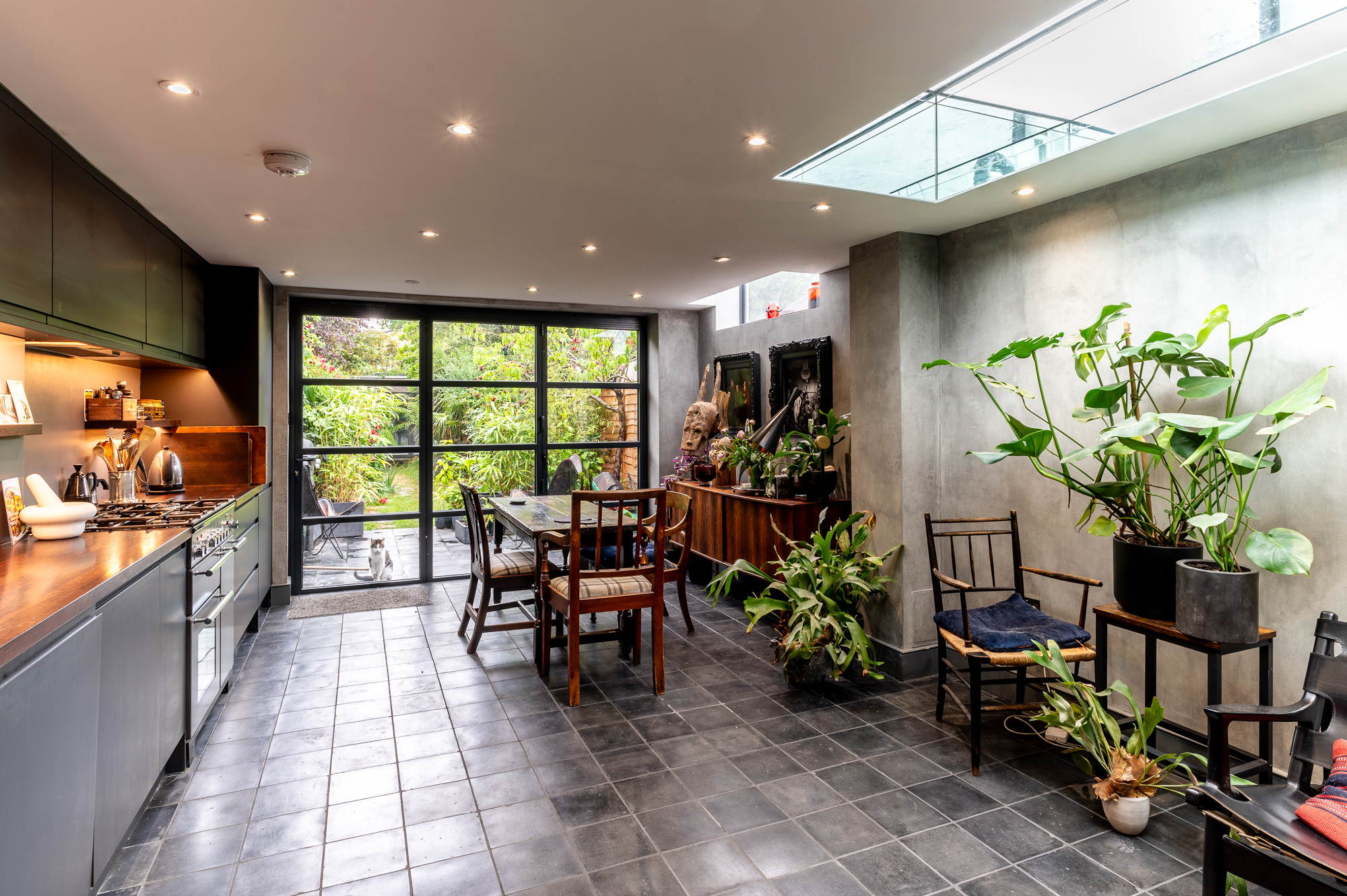
Lambeth
Hetherington Road SW4
We completed this stunning project for our client Angus in Lambeth.
Learn more
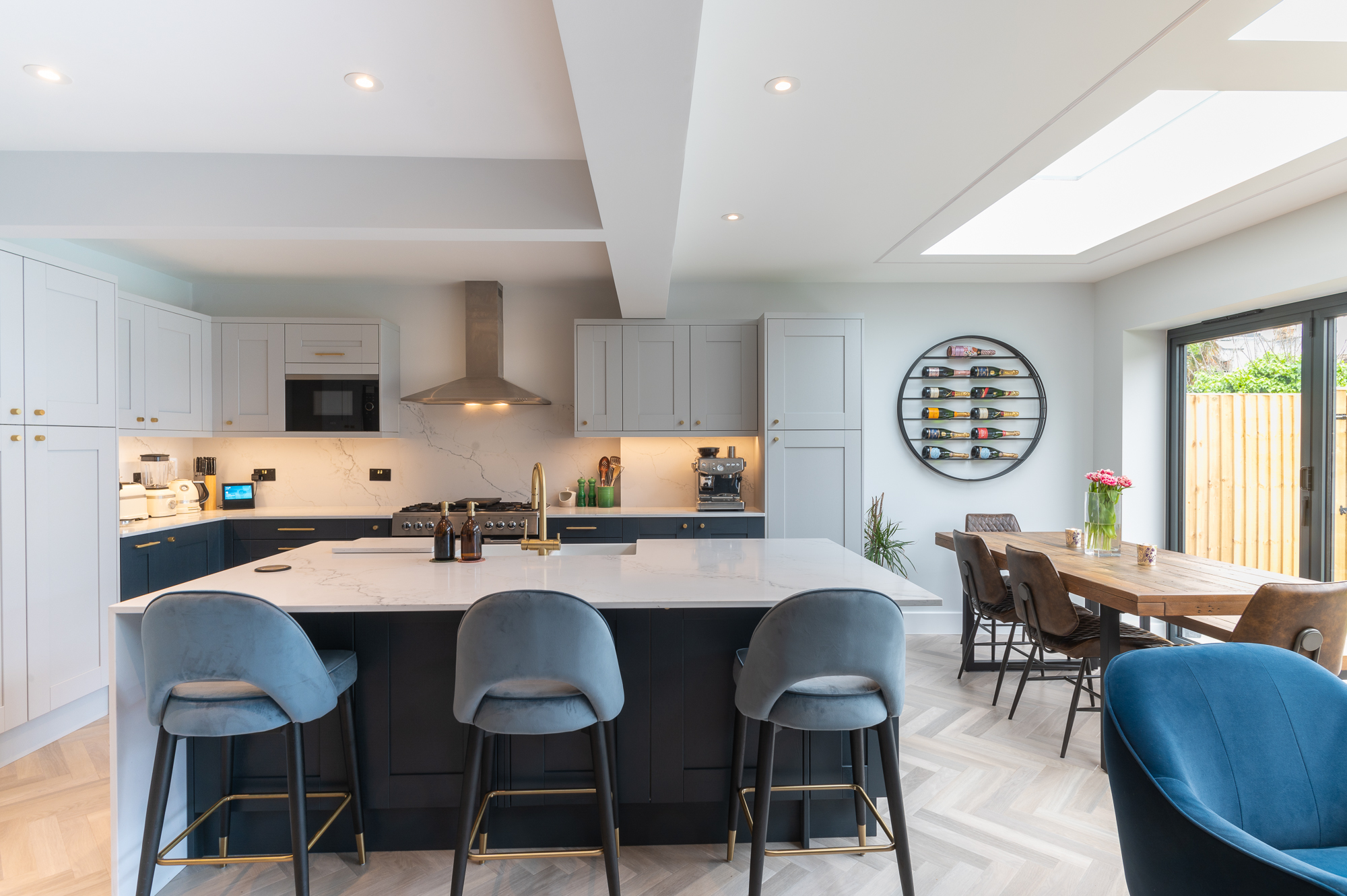
Teddington
Station Road SW4 7PA
We completed this exciting project for our clients on Station Road, a quaint residential area in the heart of Teddington.
Learn more

Leyton
Windsor Road E10
We completed this kitchen extension on Windsor Road, a charming residential street nestled in the heart of Leyton.
Learn more
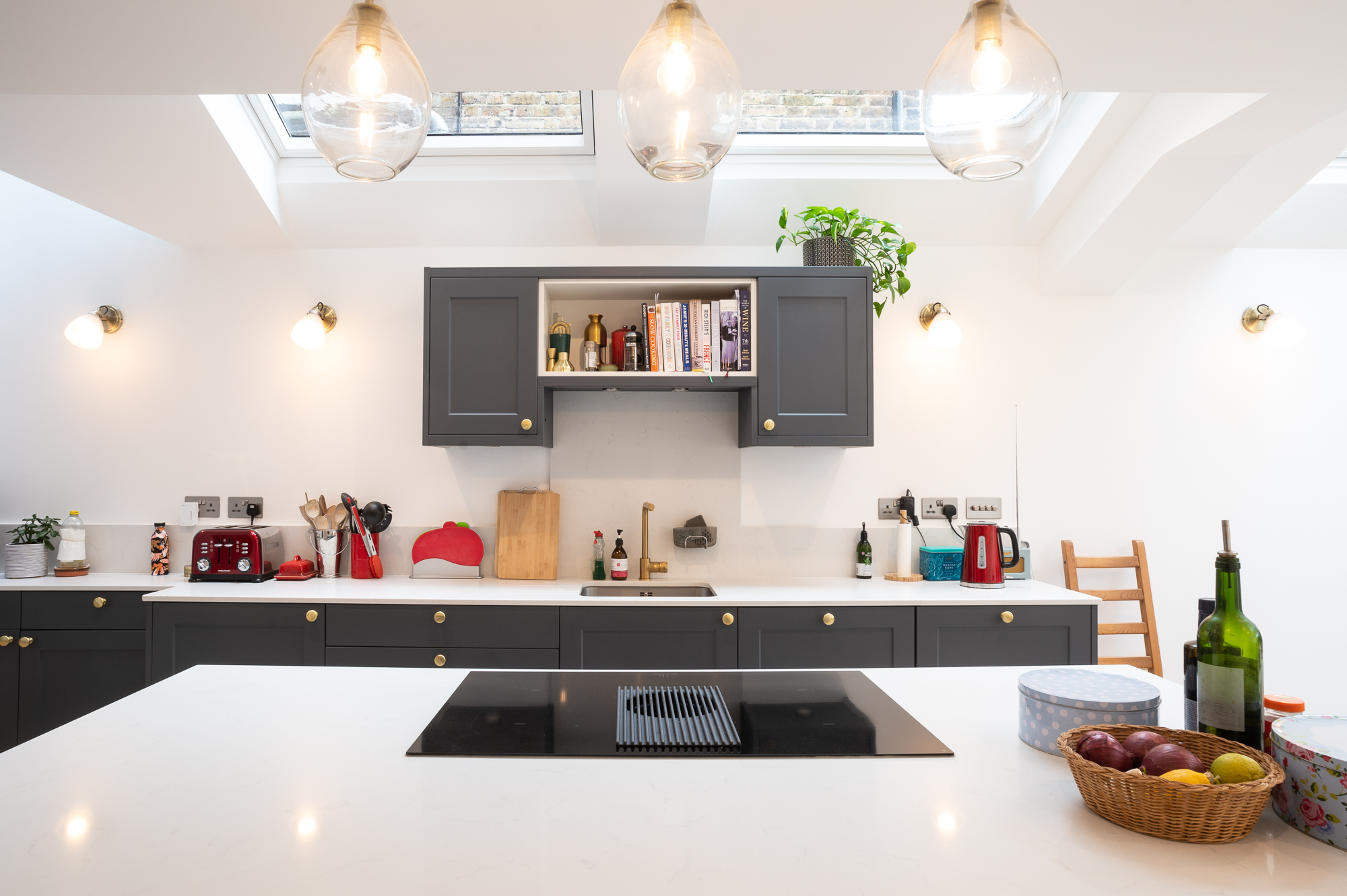
Clapham
Hydethorpe Road SW12 0JF
We did this kitchen extension project for our clients in Hydethorpe Road SW12.
Learn more

Fulham
Orbain Road SW6 7JZ
This project was completed in 2023 and the approximate budget was £101,000.
Learn more

Lambeth
Hetherington Road SW4
We completed this stunning project for our client Angus in Lambeth.
Learn more

Teddington
Station Road SW4 7PA
We completed this exciting project for our clients on Station Road, a quaint residential area in the heart of Teddington.
Learn more

Leyton
Windsor Road E10
We completed this kitchen extension on Windsor Road, a charming residential street nestled in the heart of Leyton.
Learn more

Clapham
Hydethorpe Road SW12 0JF
We did this kitchen extension project for our clients in Hydethorpe Road SW12.
Learn more
What Our Clients Say
Build a Quote!
Let's get started with building your own bespoke quote for your dream extension. Tell us as much in detail as possible to get most accurate price.
Get StartedBuild a Quote!
Let's get started with building your own bespoke quote for your dream extension. Tell us as much in detail as possible to get most accurate price.
Get Started


